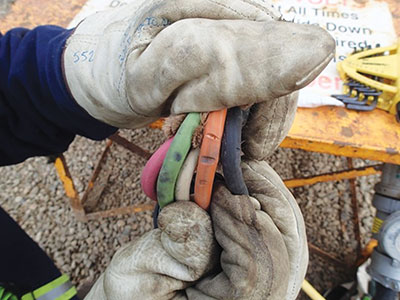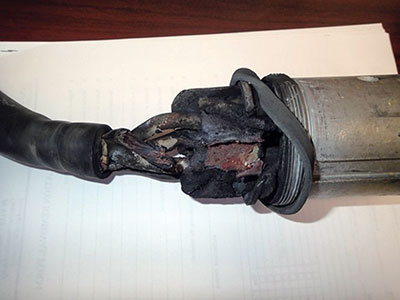
Features
Columns
Education
Electrical faults
Committing to electrical preventative maintenance
October 6, 2014 By Submitted by All-Type Electric
Maximum profitability with perfect safety is the “holy grail” for
aggregate producers; unscheduled downtime hampers both equally important
objectives.
Maximum profitability with perfect safety is the “holy grail” for aggregate producers; unscheduled downtime hampers both equally important objectives.
 |
|
Unscheduled downtime can cost thousands of dollars – or more – in hourly losses due to foregone revenue, idle labour and stranded overhead, as well as expensive emergency repair work and potentially new capital equipment. On top of the financial hit, workplace stress during unscheduled downtime is bad for morale and safety, as teams under pressure may seek ill-advised shortcuts to get back online.
The most cost-effective way to reduce unscheduled downtime is preventive maintenance. We believe the service life of your equipment can be maximized by implementing three electrical maintenance programs during scheduled downtime: annual control trailer check-up, thermal scanning, and portable power cable inspection.
Annual Control Trailer Check-up
The control trailer is a critical part of mobile crushing operations. Any control trailer issues can put the entire operation in jeopardy. An annual checkup program is the best way to ensure your control trailer will run reliably when you need it most. Check-ups can be scheduled in advance of planned downtime, particularly in winter months when product demand is reduced and wash plants are closed.
The annual check-up should include the following steps:
- Insulation resistance testing of all power cables
- Dust removal from motor control centres, panels, transformers, control stations, and all other critical electrical equipment
- Inspection of key components, including:
- Battery fluid levels
- Electrical termination points
- Indicator lights
- Lighting systems
- Motor overload settings
- Receptacles
- Starter components and operation
Thermal Scanning
All electrical components generate heat under load. In the vast majority of cases, electrical components will overheat before failing. Causes of excessive heat in electrical components include:
- Corrosion
- Dirt
- Equipment aged beyond its useful life
- Loose connections
- Mechanical failures
- Unbalanced loads
- Undersized cables
Thermal scanning should be a key part of your electrical maintenance program. In addition to proactively diagnosing faults in electrical equipment, thermal scanning can diagnose problems in mechanical equipment such as motor bearings and gearboxes. Thermal scanning can also reduce the chance of catastrophic failure in your equipment, increasing workplace safety.
Thermal scanning of electrical components must be performed using a high-quality thermal imaging camera. A trained technician, following all regulatory requirements in your jurisdiction, will take infrared pictures of similar components experiencing comparable loads. Corrective action is recommended when the temperature differential exceeds 15 C (27 F). Critical components to scan differ by plant, but can include:
- Bearings
- Branch circuit panels
- Busbars
- Central distribution panel
- Gearboxes
- Main breakers
- Motors
- Motor contactors
- Motor overloads
- Receptacles
Portable Power Cable Inspection
Portable power cables are also critical to mobile crushing operations. Most of the equipment in a mobile crushing plant is typically powered with portable power cables, commonly referred to in Canada as “cabtyre.” Portable power cables on aggregate sites are under constant stress due to numerous factors, including:
- Extreme temperatures
- Falling aggregate product
- Foot traffic
- General wear-and-tear
- Vibration
- Vehicle traffic and other deployment issues
These issues can result in a number of problems, most commonly including: cracked cable jacketing, damaged plugs, loose terminations on equipment, and bare conductors. Such risks can cause a wide range of intermittent equipment failures, permanent equipment failures, and shock hazards. A preventative visual inspection of the cables often includes identification or validation that:
- Cables in heavy foot traffic areas are mechanically protected
- Cable runs avoid vehicular traffic areas
- Cable jackets are free of cracks and other damage
- Cables pass insulation resistance testing
- Strain relief connectors and plugs have the proper seating
 |
|
| Committing to electrical fault maintenance can help to improve the service life of your equipment.
|
Summary
In any process manufacturing industry, electrical preventative maintenance programs are a significant way to extend the service life of your capital equipment, lower emergency repair costs and reduce the risk of catastrophic failures – all while increasing site safety. Preventative programs are especially critical in the aggregate industry, where equipment is pushed to maximum output in harsh, outdoor conditions (sometimes at round-the-clock schedules). The introduction of an electrical maintenance program will allow you to take a giant leap towards your ultimate goal: zero unscheduled downtime.
Print this page